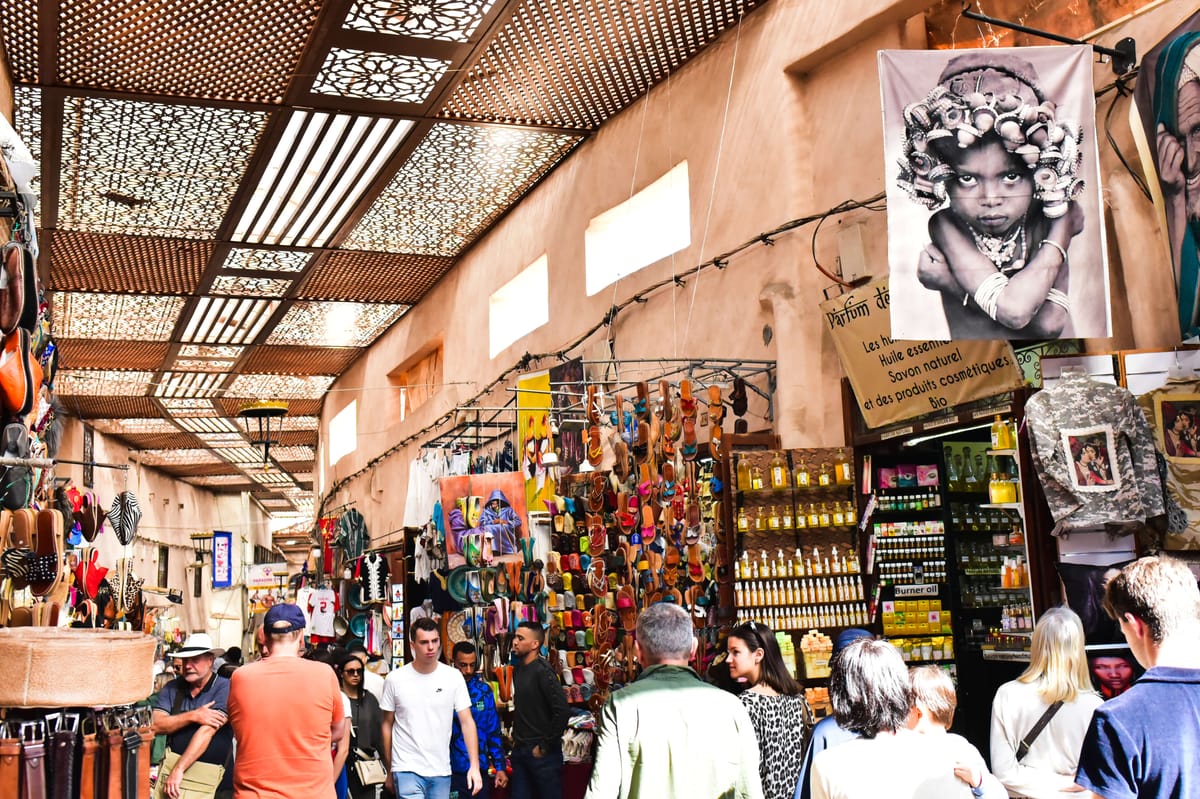
My head was spinning the first time I stepped into the Medina in Marrakech, Morocco.
From aggressive merchants selling handbags and hand-woven head scarves to motorcycles speeding up and down the narrow walkways without any warning to random snake charmers and food carts, it was a frenzy of energy that could overwhelm the senses.
The Medina, which is the historical district in the major cities throughout North Africa, can be summed up as pure chaos for first-time visitors. At least that is the way it was for me the first day I arrived in Marrakech. Despite having walked the streets of Times Square in New York City and Hollywood Boulevard in Los Angeles well past midnight, wandering through these pathways and back alleys was an exhilarating and stressful experience.
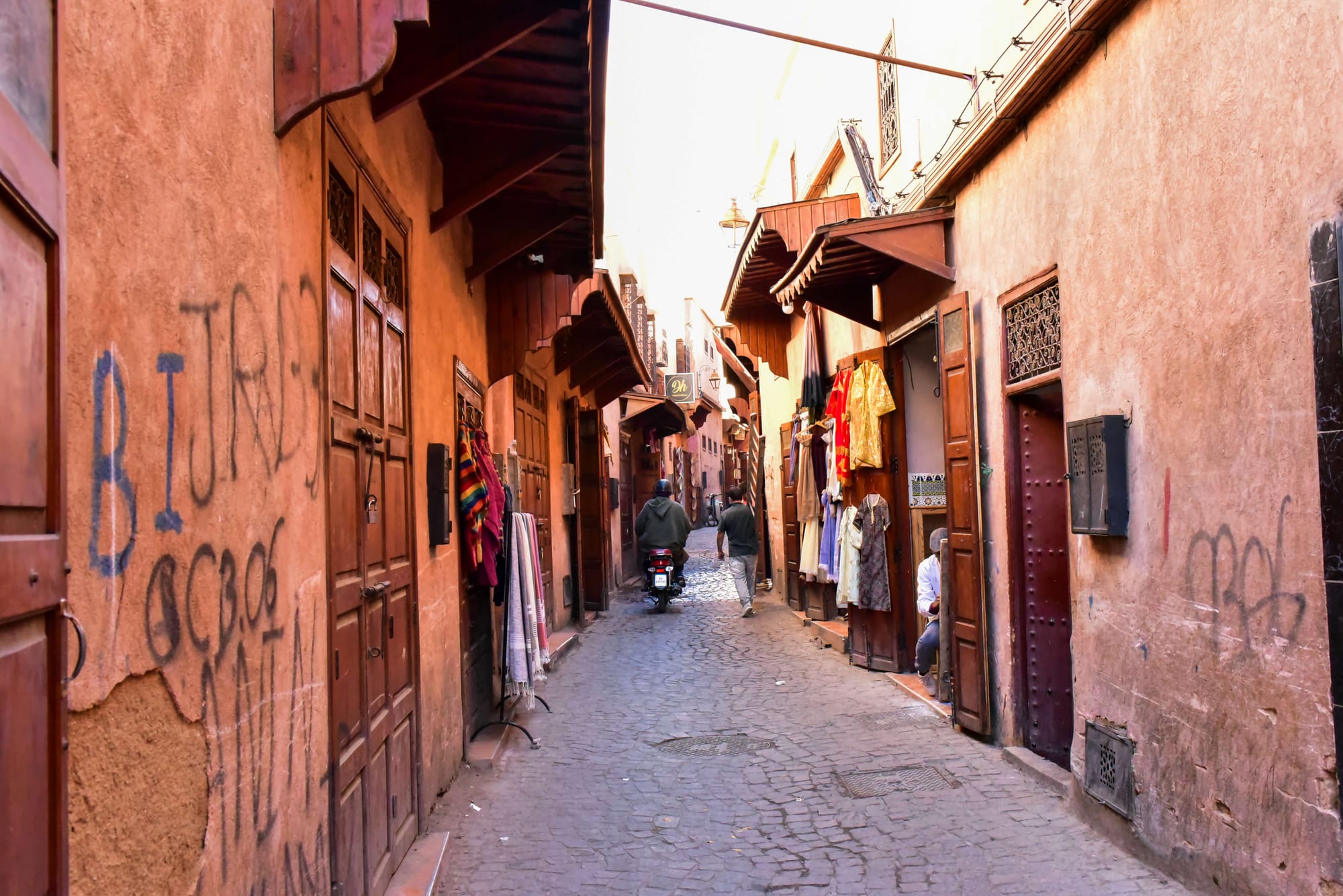
But just at the one moment when I felt like I might just be overcome by it all, I looked up and saw the signs “Riad al loune” and “Riad El Cadi.” I knew then my respite from the chaos was at hand.
Whether you’re actually staying in that particular riad as a guest or just need a break from the activity in the Medina, the term has become synonymous with Moroccan culture.
“Riad in Arab language means a beautiful garden or a paradise,” says Michael Gentschy. “It’s also used for a special type of house with the patio with a fountain in the patio; there are plants and the patio opens to the sky so that the birds can enter. It’s a very private place, full of peace and very secure — where you can live in the middle of the busy town of Marrakech like in a village, so it’s very calm and peaceful there and it gives a high quality of life. The riad is mostly built with thick walls of clay, so that you even in summer do not need air conditioning, especially on the ground floor. The plants and the fountain create a kind of micro-climate, so it’s like a natural air conditioner.”
The 68-year-old Gentschy is a German transplant who moved to Marrakech 15 years ago to escape the brutal European winter. He ended up purchasing a home in the Marrakech Medina and turned it into Riad Marokko Hautnah ($35 a night).
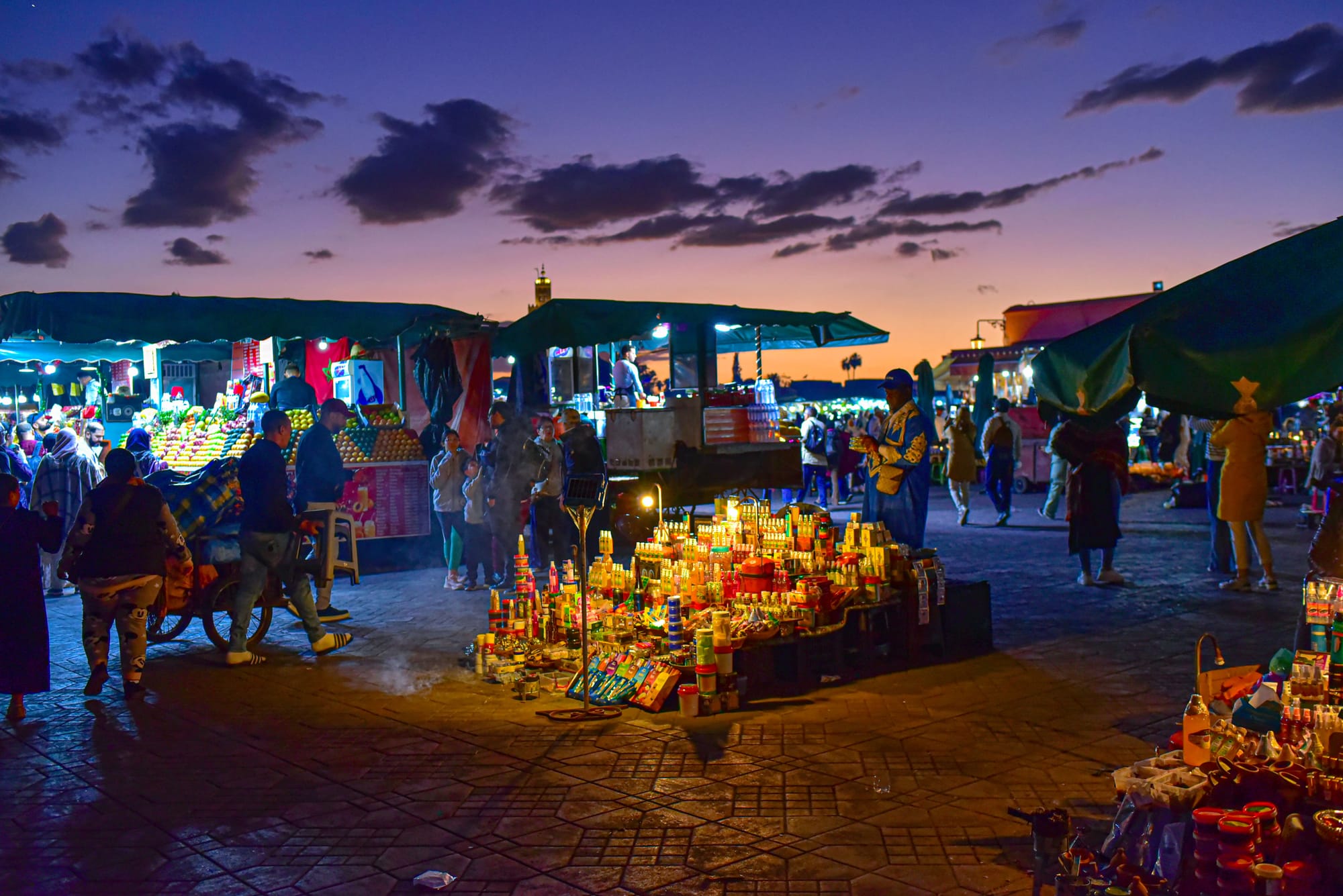
While riads can be found in a variety of sizes and locations, in 37-year-old Noureddine Bouzidi Idrissi’s estimation, it’s not a real riad unless it is inside the world of the Medina, which is often separated from more modern parts of the city by giant iron walls built as far back as the ninth century, and is older than the city itself. Inside those walls are thousands of people living and working in the Medina.
“Most tourists, they prefer to stay in a riad to live a real experience inside the old Medina because there is a lot to see: architecture and history and exploring and hospitality, eating Moroccan food, doing cooking class, hammam traditional,” says Idrissi, who operates Salam — The Arabic Feeling ($21 a night) out of his family home in Fes el Bali.
While making extra money is a big reason for many homeowners to begin renting out rooms, it tends to be only part of the decision.
“The history of our home is it is very old, more than 500 years old,” Idrissi says. “Then we had it renovated with our hands, me and my family, because I, with my two brothers, do carpentry and carving wood. We have been sharing our home with guests for seven years. We started sharing our home with guests because I love traveling and meeting people from around the world — sharing stories, learning languages, exchanging everything — and my family, too.”
While the riad is the old world, they can be found with new world technology on platforms such as Airbnb, Booking.com and Expedia. It took some time to read the reviews and filter through the fake riads to find ones that actually fulfill the promise of cultural enlightenment. I checked that each was located inside the city’s Medina and also provided opportunities to get to know the hosts and other guests. Idrissi’s six-bedroom, multi-level riad was one of my favorites. With its stunning architecture, high ceilings and vibrant blue tiles, Salam — The Arabic Feeling was unlike any hotel and modern home I had ever been in.
Because part of the home was below ground, there were no windows to illuminate the rooms until you got to the upper levels. That didn’t take away from the aesthetic of Idrissi’s home.
“The lower plant of the house is for use exclusive of our guests,” Idrissi said. “This part features two rooms, one shared bathroom, a fountain and a relaxing area with satellite TV. We can also grant access to our guests to our rooftop with nice views of the Medina. My family and I live in the upper plant, which is not closed and is accessible. Guests will have independence from ourselves and at the same time they will be welcomed to our table to share a traditional Moroccan meal.”
Being able to sit at the same table to share meals has become a focal point of the local riads. After roaming the city and region on day trips or tours, being able to come back and discuss what you have encountered has proven to be a benefit for guests and hosts. During my stay in Fes, I was able to meet not only Idrissi but also his mother (who picked me up from the police — see page xx), his daughter and his brother Mohammed, who invited me to share his meal on my first night in town.
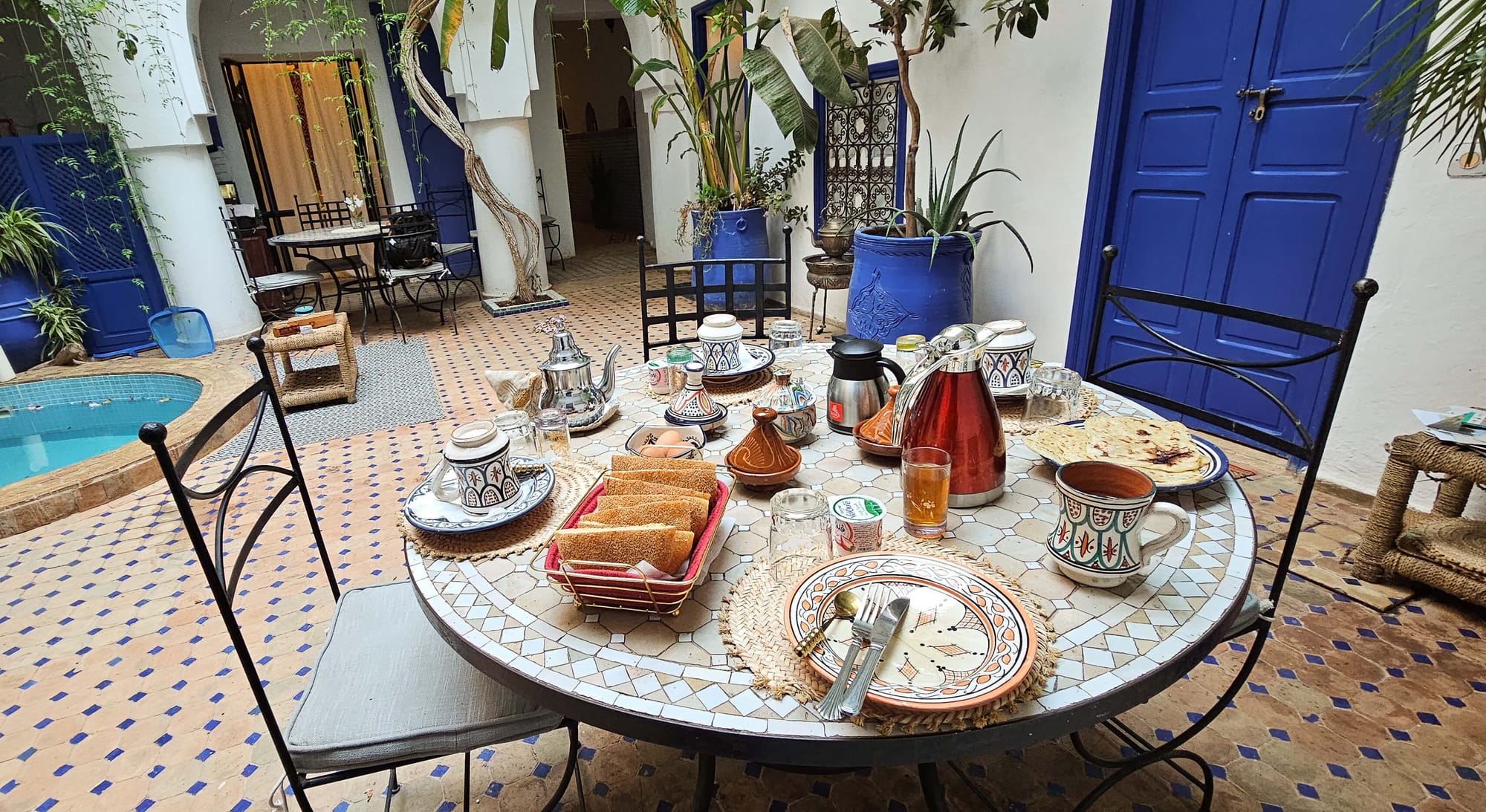
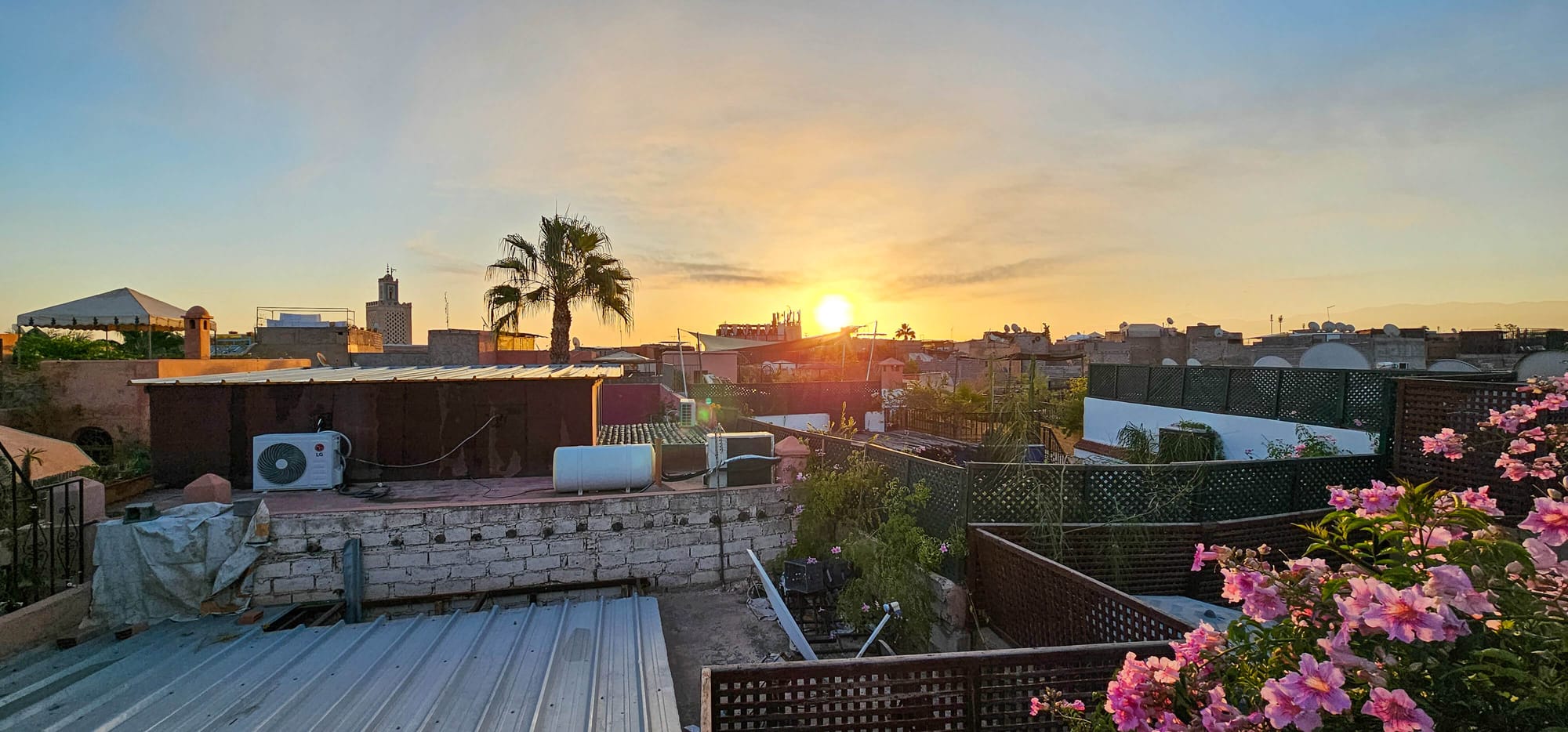
“We do share meals with guests,” Idrissi says. “That is very important in hospitality, because they want to see the culture.”
While each of the riads I stayed in was run differently, they each provided a taste of the city’s culture. In Marrakech, it was the traditional Moroccan breakfast each morning that consisted of Jben cheese, honey, olive oil, olives, freshly baked khobz (bread), baghrir (pancakes), an assortment of jams and Moroccan mint tea. It was a delicious way to start the day.
In Tangier, the riad is next to a mosque. So, each morning I was awakened during the Muslim call to prayer, which was amplified over loudspeakers throughout the Medina.
But one morning I was invited to witness a wedding that kicked off at 5 a.m. It was raucous, involving flares and drones — an ultra-modern affair compared to the call to prayer that took place simultaneously. It was probably a once-in-a-lifetime experience.
I don’t want to make it sound like there are no downsides to staying in a riad in the heart of a medina and its marketplace: The quarters can be cramped and with so many people in a confined area, you can get a sense of claustrophobia.
But as I stood on my riad’s rooftop terrace overlooking the nightlife of the Marrakech market, I knew I had made the right decision. I couldn’t imagine staying in a 5-star hotel that was miles away from the action of the Medina and being able to get the same photographs, stories and experiences that I left with. I can’t guarantee you will get the same type of adventure, but it’s worth a try.
“If you ask me why tourists should live in a riad, it is to make the experience of the Medina,” Gentschy explains. “I would answer that it is a perfect place to be in the middle of a very vibrant, medieval, [African] town with a lot of things to see in the markets and the places to entertain — to listen to music, see the dances, the snake charmers — and where you have a perfect place to relax from the noise and the stress of the city, so you can experience life quality and beauty.”
The Day I Was Taken to Jail in Morocco
A story based on actual events as experienced and told by the author
For more than 50 years of my life, I have been able to avoid run-ins with the law. Minus a few speeding and seatbelt tickets, my record is clean. In fact, the only times I can remember setting foot in a jail or prison were a tour of Alcatraz and a field trip to the local jail in Lawton.
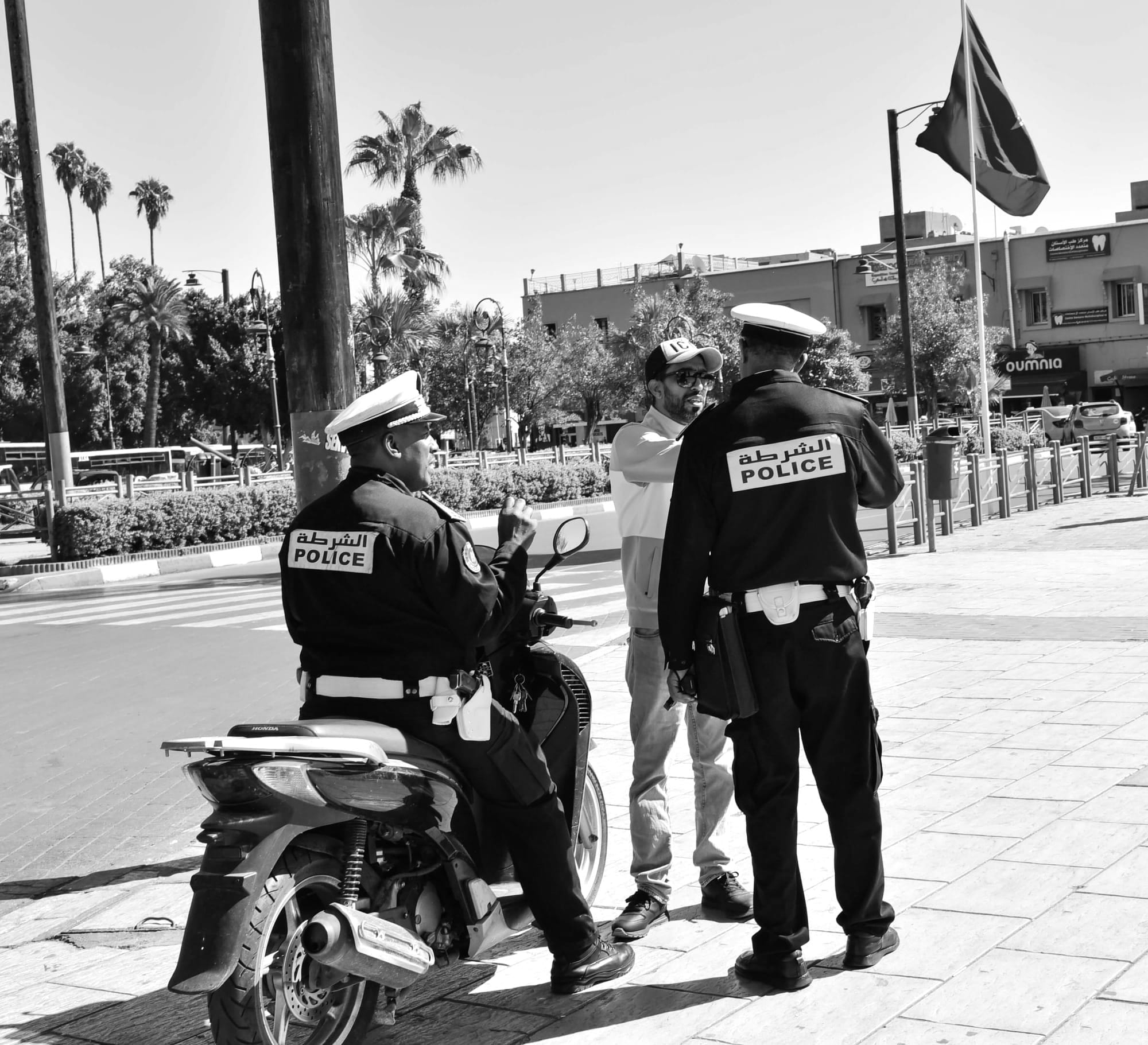
That changed on Nov. 3, 2024. While I can laugh about it now, at the time when I was surrounded by police officers and an angry mob in a foreign country, it truly didn’t feel real.
The drama started when I was staying in Tangier, where I had planned to photograph the scenery and just relax. But then I lost my cell phone, and my travel card was being declined. So the entire night was spent trying to get my phone back and talking with bank operators. By the time it was all settled, it was 2 a.m. and I had a train to catch to Fes at 7:30 a.m. Instead of doing any research about the city, I went to bed. Big mistake.
When I got to Fes, I contacted my Airbnb host and he gave me directions to a riad inside the Medina (See page xx). The instructions began with “Get an Elite Taxi.” I assumed all taxis and ride sharing apps were just called taxis. Big mistake No. 2.
In previous stops, I had used a ride-sharing app called indrive, the Moroccan version of Uber and Lyft. I had no issues contacting a driver and he met me across the street from the train station. However, as soon as we got into his car and he prepared to pull out, we were surrounded by a small but irate mob of Elite Taxi drivers. My driver got out and began arguing with the angriest and most vocal leader while other drivers began accusing me of something while emphatically gesturing in my direction. This was taking place in the middle of a crowded street in front of dozens of onlookers. The scene was so wild and full of adrenaline.
When the police arrived, the situation became more chaotic and confusing. The officer began asking what happened and everyone started yelling at once. Every few minutes a more senior officer would show up to take control and ask me the same questions. When the police finally told me they were going to take me to my hotel, I thought the drama was over. But I should have known something was wrong since he never asked for the address. Instead, I was driven to the local police station. The fear I felt in the pit of my stomach when we pulled up to the gray, bland building was intense.
What I didn’t know at the time was that ride-sharing apps are “sort of” banned in Morocco. Even though apps like inDrive and Careem can be downloaded and function, they are technically against the law — at least, that is what the police told me. I was told later that because Fes doesn’t receive the same high volume of tourism as Marrakech, Casablanca, Rabat or Tangier, cab drivers take it seriously when ride-sharing apps “steal” their fares without having to pay their share in taxes. Yet, all the cities have had to deal with the issue, especially with Morocco hosting 2025’s AFCON tournament and the World Cup in 2030.
Back at the police station, when they finally got around to taking my statement, they brought in another officer who spoke some English. He was also the only other dark-skinned person in the station besides me, so when he kept calling me his African brother and told me of his dream to go to the U.S. one day, it felt like the old “good cop, bad cop” routine was being run on me.
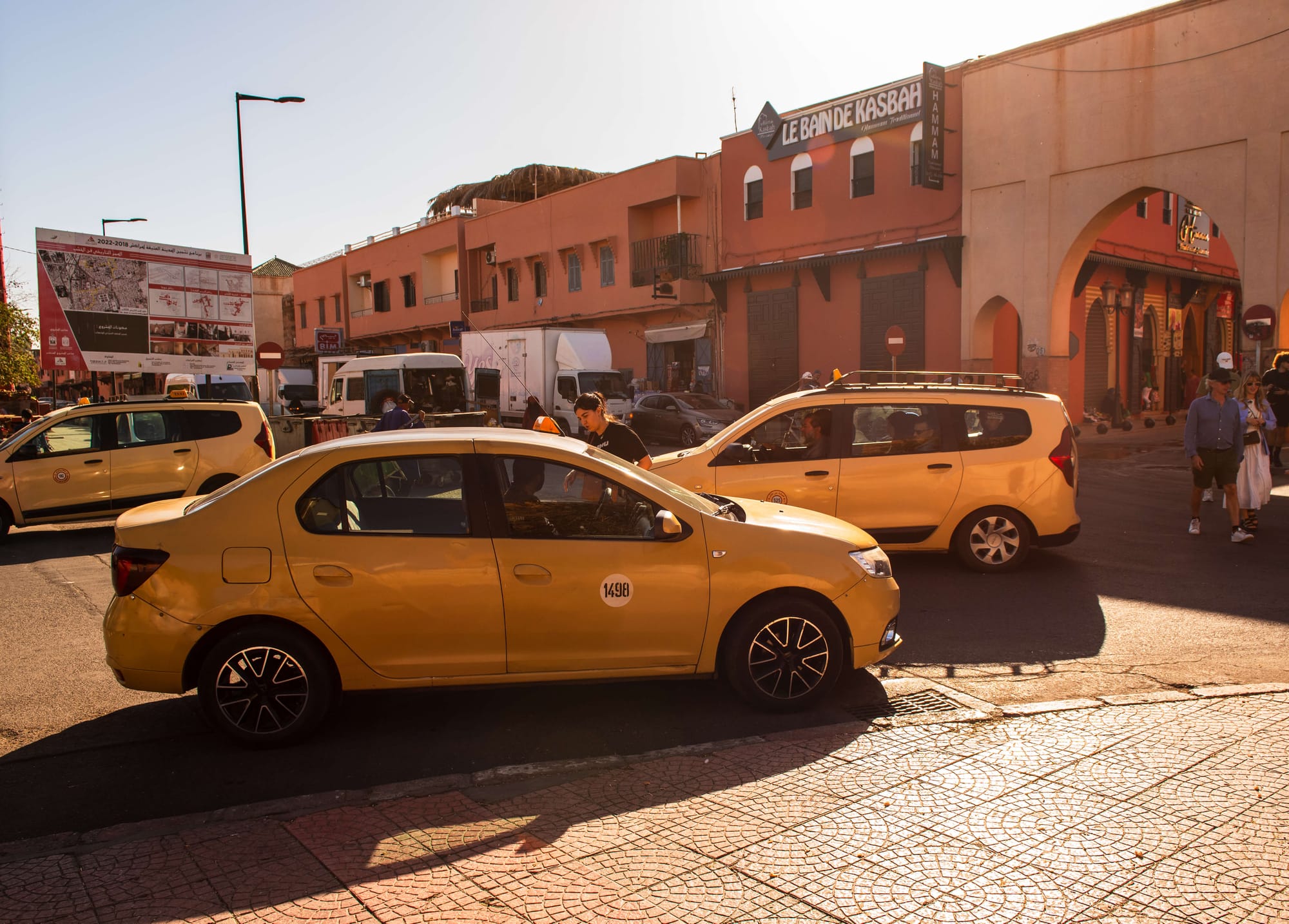
The statement was printed out and I was told to sign it. When I pointed out it was Arabic and I couldn’t read it, they didn’t seem to care. So, doing something I would never do in the States, I signed the unreadable statement in triplicate. At that point I didn’t know if I had confessed to some long-standing homicides in the city or denounced America. But they finally grabbed my bags, gave me my passport and took me to my Airbnb hosts after some three hours.
As soon as I got settled, I contacted a friend who is an officer in the United States Army, and he told me I needed to call the U.S. Embassy in Casablanca immediately. That was something I never thought I would have to do.
I explained everything to the Embassy’s overnight handler. He was confused too; he had been at his post for more than a year and had never heard of anything like this before. But since they gave me back my passport and didn’t hold me, he said, “If they were going to charge you with something, you would still be in the jail right now.” He told me to try to put it out of my mind.
When the police finally told me they were going to take me to my hotel, I thought the drama was over. But I should have known something was wrong since he never asked for the address. –Michael Kinney
I tried my best to follow his advice. But that night messages on What’sApp began to show up from family members of the inDrive employee and also from the police officer who called me his African brother. The driver’s family wanted to know what I told the police, which is understandable: If he was found guilty, he would have his car impounded for 90 days and have to pay a 10,000 dirham ($1,000) fine to get it back. It was obvious he didn’t have the money. But the messages from the officer really put me on edge, and I didn’t know what to think when he also tried to call me. I ignored all of them.
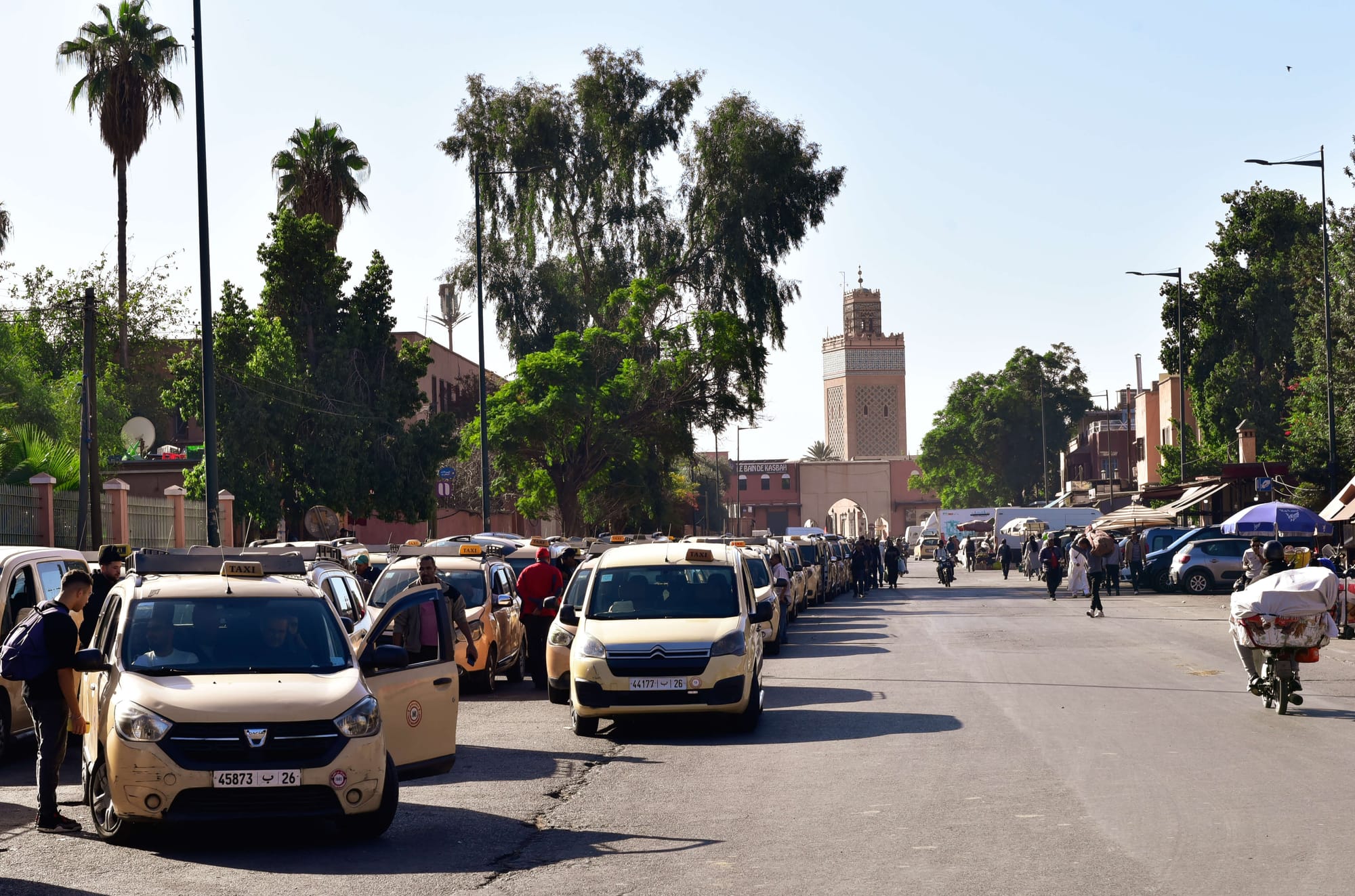
After getting back from a day trip to Chefchaouen, I contacted the Embassy again. This time, I could hear the apprehension in the same handler’s voice because he had no idea why the officer would try to get hold of me. He surmised he was either going to set me up or ask for a bribe, or really was trying to find a way to get to America.
I finally decided it was time to get out of Fes. The earliest option was 4:45 a.m. on a six-hour train ride to Marrakech. I got about two hours’ sleep and found a transport to the same train station where I had arrived where all the trouble started. After waiting in the terminal for an hour trying not to stare at the police who manned the front doors, we finally boarded and took off down the rail, and I immediately felt the pent-up stress start to leave my body.
While this situation won’t stop me traveling to almost anywhere on the globe, I will be a little more cautious when it comes to knowing local laws and customs. But these types of misunderstandings are the risk that comes from exploring different cultures.
Unfortunately, even though I saw some amazing landscapes, dined on savory meals and met some intriguing and kind locals during my nine days traveling around North Africa, this experience stands out. Hopefully, as time moves on, the other aspects of the trip will rise to the forefront where they belong.

